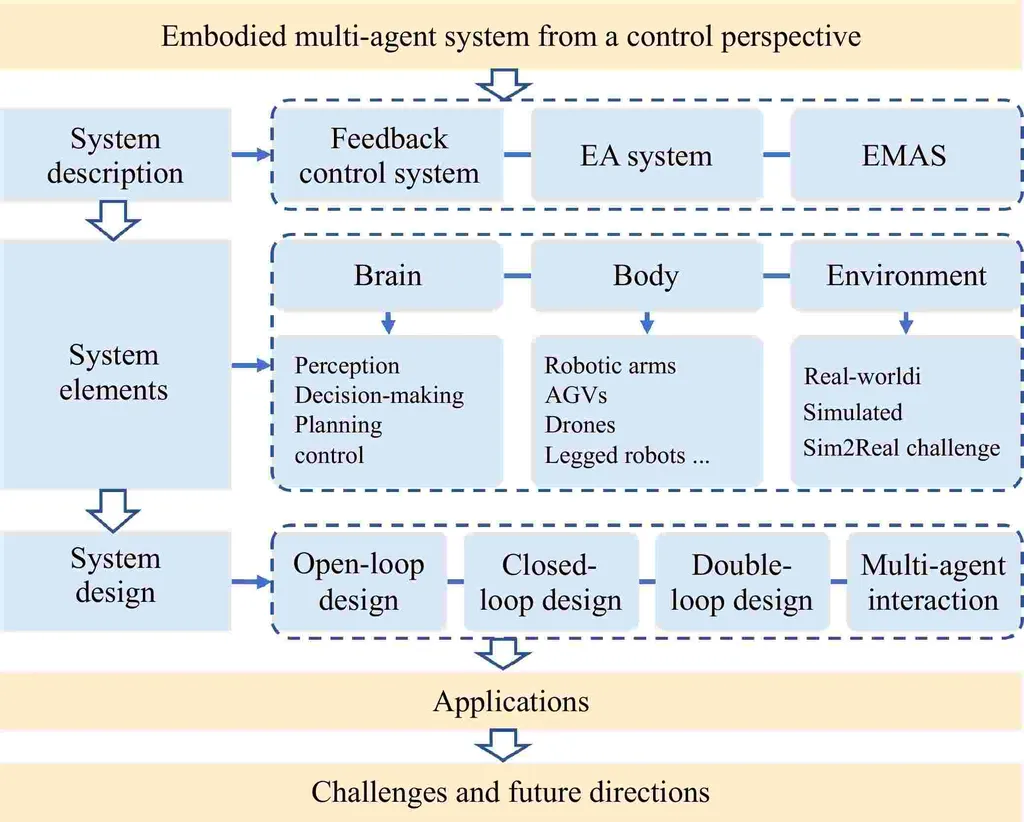Researchers Leonardo Santos, Caio C. G. Ribeiro, and Douglas G. Macharet, affiliated with the University of São Paulo, Brazil, have developed a novel trajectory planning framework that could significantly enhance communication networks in multi-agent operations, such as search and rescue missions, military maneuvers, and disaster response efforts. Their work, titled “Communication Backbone Reconfiguration with Connectivity Maintenance,” reframes the complex problem of networked multi-agent motion planning as a more manageable manipulator motion planning problem.
The researchers’ approach is both simple and effective, addressing the design, deployment, and reconfiguration of a communication backbone. This backbone is essential for maintaining robust information exchange among multiple agents in dynamic and challenging environments. The framework is versatile, accommodating backbones of varying configurations, including different numbers of robots and varying distance limits between them. This adaptability is crucial for real-world applications where operational conditions can change rapidly and unpredictably.
The team leverages the more mature field of manipulator motion planning, which is well-developed in both theory and practice. By reframing the problem, they can utilize widely available motion planning algorithms and frameworks designed for manipulators. This cross-disciplinary approach not only simplifies the problem but also ensures that the solutions are practical and readily implementable. The researchers’ methodology could lead to more efficient and reliable communication networks, which are vital for the success of multi-agent operations in defence and security sectors.
In practical terms, this research could revolutionize how military and emergency response teams maintain communication in the field. For instance, in a search and rescue mission, maintaining a stable communication backbone is critical for coordinating efforts and ensuring the safety of both the rescuers and the victims. Similarly, in military operations, a robust communication network is essential for strategic planning, real-time coordination, and situational awareness. The ability to reconfigure the communication backbone on the fly, adapting to changes in the number of agents or the distance between them, could provide a significant tactical advantage.
Moreover, the framework’s adaptability makes it suitable for disaster response scenarios, where communication infrastructure is often compromised. By deploying a reconfigurable communication backbone, response teams can quickly establish and maintain communication links, facilitating better coordination and faster response times. This could be particularly beneficial in large-scale disasters where traditional communication networks are down, and information exchange is crucial for saving lives.
In conclusion, the work of Leonardo Santos, Caio C. G. Ribeiro, and Douglas G. Macharet presents a promising advancement in the field of multi-agent communication networks. By reframing the problem as a manipulator motion planning issue, they have developed a practical and effective solution that could enhance communication in various defence and security applications. Their research highlights the potential of interdisciplinary approaches in solving complex real-world problems, paving the way for more robust and adaptable communication systems in critical operations.Read more at arXiv.

